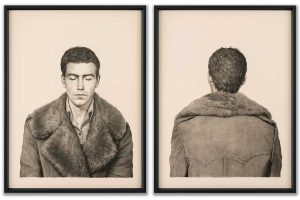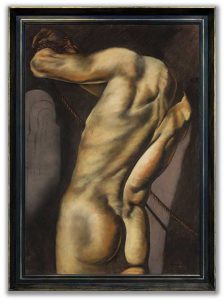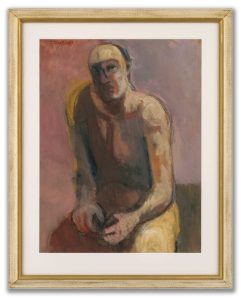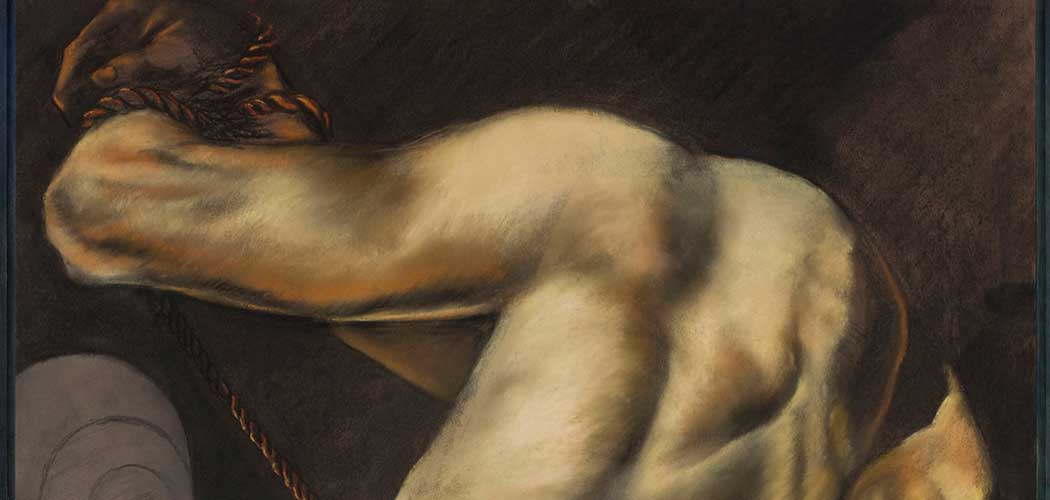With 2021 starting with a brand new lockdown and art galleries now closed for the foreseeable future, we asked Henry Miller to highlight three new pieces from his collection. Although visiting Henry Miller Fine Art is not possible, the gallery remains open for enquiries and free delivery is available in the London area.
Claudio Bravo (1936-2011), Fur Coat (Front and Back), 1976

Claudio Bravo was a hyperrealist artist of extraordinary talents. Leaving Chile aged 21, he lived in Spain and New York, before moving to Morocco in 1972 where he had found the colours and light he was searching for, away from (as he put it) the drabness and cement of cities. His work, although retaining its distinctive character, became infused with Moroccan culture and the people around him; most of his models were local boys, workers, their friends and even the telephone repair man.
Patrick Hennessy (1915-1980), Bound Figure, c.1938-39

Patrick Hennessy was an Irish realist painter, who, throughout his career, made a living from flower paintings, still-lives and portrait commissions. However, alongside this conventional output, he also created a body of work which was far more personal and, for its time, ground-breaking. He addressed issues of masculinity, sexual identity and homosexuality, which was highly extraordinary and extremely brave considering homosexuality was then still illegal. In 1968, like Bravo, he moved to Morocco where he lived for the next ten years before setting in Portugal.
Harold Kitner, (American 1921-2004), Male Figure, 1958

Harold Kitner was a successful American artist who exhibited widely in the US, while working as a lecturer at Kent State University, Ohio, where he taught art and art history from 1947 until 1990. During his career, he played a significant role in creating the Art School’s core programme, organising, among other things, the Kent State Arts Festival.
This painting is clearly influenced by the works of the Bay Area Movement which made a point of rejecting abstract art, prevailing in the 1950s, and exploring the human figure.
For further information on the Henry Miller Fine Art collection please visit: www.henrymillerfineart.co.uk














